Publications
Recent research highlights
Hybrid modelling of leaf traits: Integrating neural networks with radiative transfer theory
🔥 First paper by PhD student Peng Sun!
This study leverages physics-informed neural networks: combining neural networks with radiative transfer theory. We show this leads to not only improved predictions of plant functional traits but it can be used to pinpoint where process-based models fall short.
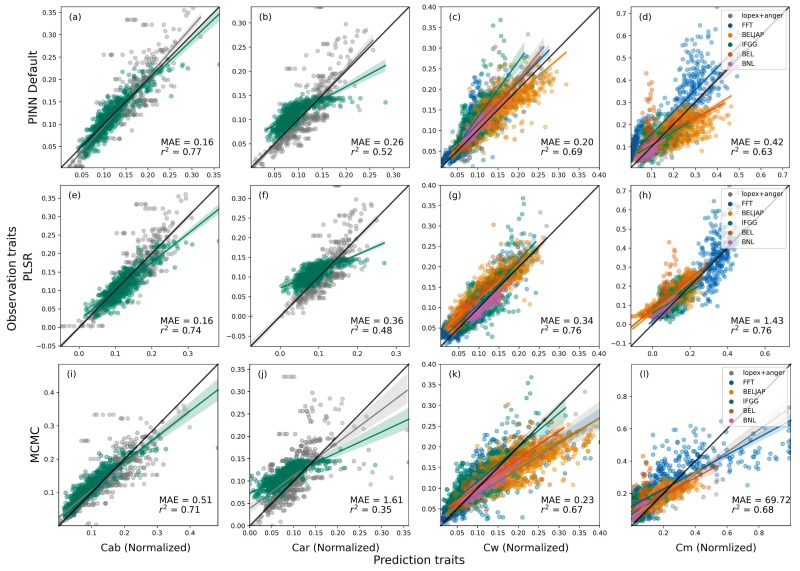
Hybrid modelling offers a path to more accurate trait prediction and deeper insight into model limitations across plant systems.
Hybrid modelling of leaf traits: Integrating neural networks with radiative transfer theory
Peng Sun, Peter M. van Bodegom, Joris Timmermans
Published: November 2025, Remote Sensing of Environment
🔗 Read the full paper
When can we detect lianas from space? Toward a mechanistic understanding of liana-infested forest optics
New paper by PI Visser
Lianas exhibit a consistent spectral signature across globally distributed tropical forests. We use mechanistic radiative transfer models to figure out why we can detect lianas from space, and validate these finding with field data from the leaf, canopy and standscale. The results raise a new fundemental question: why did lianas independently evolve a similar spectral signal?
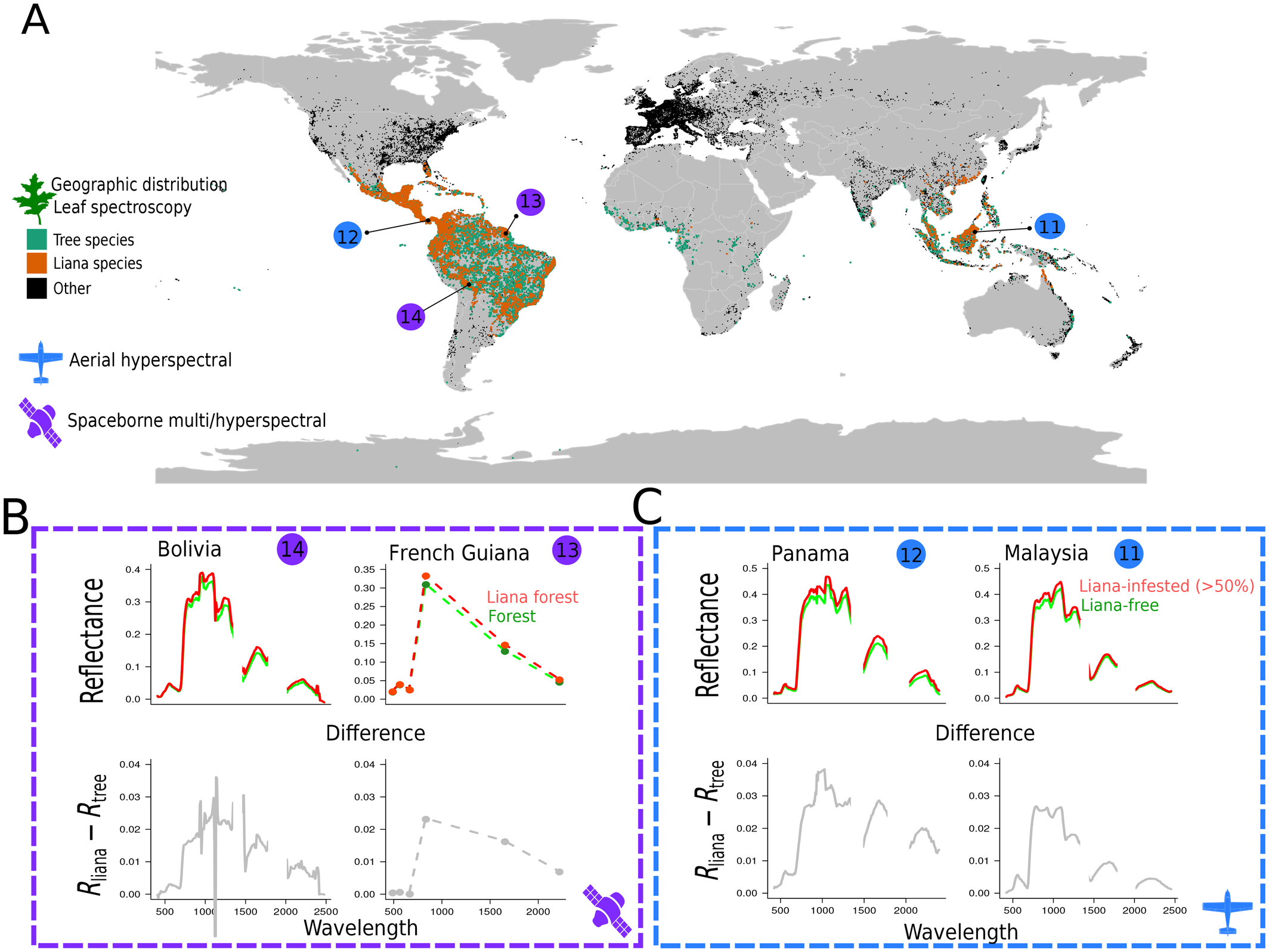
Mechanistic modeling and multi-source observations reveal that lianas can be reliably detected from satellites via their unique optical traits.
When can we detect lianas from space? Toward a mechanistic understanding of liana-infested forest optics
Marco D. Visser, Matteo Detto, Félicien Meunier, Jin Wu, Jane R. Foster, David C. Marvin, Peter M. van Bodegom, Boris Bongalov, Matheus H. Nunes, David Coomes, Hans Verbeeck, Q. J. Antonio Guzmán, Arturo Sanchez-Azofeifa, Chris J. Chandler, Geertje M. F. van der Heijden, Doreen S. Boyd, Giles M. Foody, Mark E. J. Cutler, Eben N. Broadbent, Shawn P. Serbin, Stefan Schnitzer, M. Elizabeth Rodríguez-Ronderos, Frank Sterck, José A. Medina-Vega, Stephen W. Pacala
Published: April 2025, Ecology
🔗 Read the full paper
Lianas are on the rise across tropical forests
🔥 First paper by PhD student Manuela A. Rueda-Trujillo!
Lianas are increasing globally, reshaping tropical forests and affecting their ability to store carbon. While this trend has been well-documented in the Neotropics, its consistency across the tropics remained unclear. Our study systematically reviewed and synthesized global data, revealing a pan-tropical increase in liana abundance at a rate of ~10% to 24% per decade. Although local variations exist, the widespread nature of this phenomenon suggests climate-driven shifts in forest structure. Rising turnover rates and canopy expansion of lianas indicate that their dominance may not only persist but intensify under climate change.

Our meta-analysis confirms a global increase in lianas, with climate change likely playing a key role in their expansion. The findings underscore their growing influence on tropical forest dynamics and global carbon storage.
Global Increase of Lianas in Tropical Forests
Manuela A. Rueda-Trujillo (PhD student, MuSE Lab), Michiel P. Veldhuis, Peter M. van Bodegom, Hannes P. T. de Deurwaerder, Marco Visser
Published: August 2024, Global Change Biology
🔗 Read the full paper
How climate change gives lianas an edge
Lianas are increasing in tropical forests pan-tropically, we have showed that before, outcompeting trees and reducing their ability to store carbon. Here we explain how rising CO₂ levels boost forest productivity but disproportionately benefit lianas, reshaping. Interestingly, droughts typically limit liana growth (as lianas are hydrologically "vulnerable"), but forest structure and demographic interactions can sometimes reverse expectations, allowing lianas to thrive in drier conditions.

Our mechanistic model linking plant physiology, growth, and competition to forest structure. It integrates photosynthesis, water transport, and carbon allocation, driven by environmental factors like CO₂, light, and moisture. The model predicts how these processes shape tree-liana dynamics, explaining liana expansion in tropical forests under climate change.
Linking Physiology, Epidemiology, and Demography: How Lianas Outcompete Trees
Hannes P. T. De Deurwaerder, Matteo Detto, Marco D. Visser, Stefan Schnitzer, Stephen W. Pacala
Published: August 2024, PNAS, Vol. 121, Issue 34
🔗 Read the full paper
What determines pathogen diversity?
🔥 Collaboration with the AMIS-lab of the University of Amsterdam!
The prominent Janzen–Connell hypothesis states that the high tree diversity in tropical forests is explained by the stabilizing actions of specialized enemies. Yet, this takes the presence of specialized pathogens for granted, overlooking that pathogen coexistence also requires an explanation. Moreover, stable ecological coexistence does not necessarily imply evolutionary stability. Here we link theory from community ecology, evolutionary biology and epidemiology to tackle this gap in the hypothesis. We build a stronger theoretical basis for the Janzen–Connell hypothesis, delivering a wider lens that can yield important insights into the maintenance of diversity in these increasingly threatened systems.
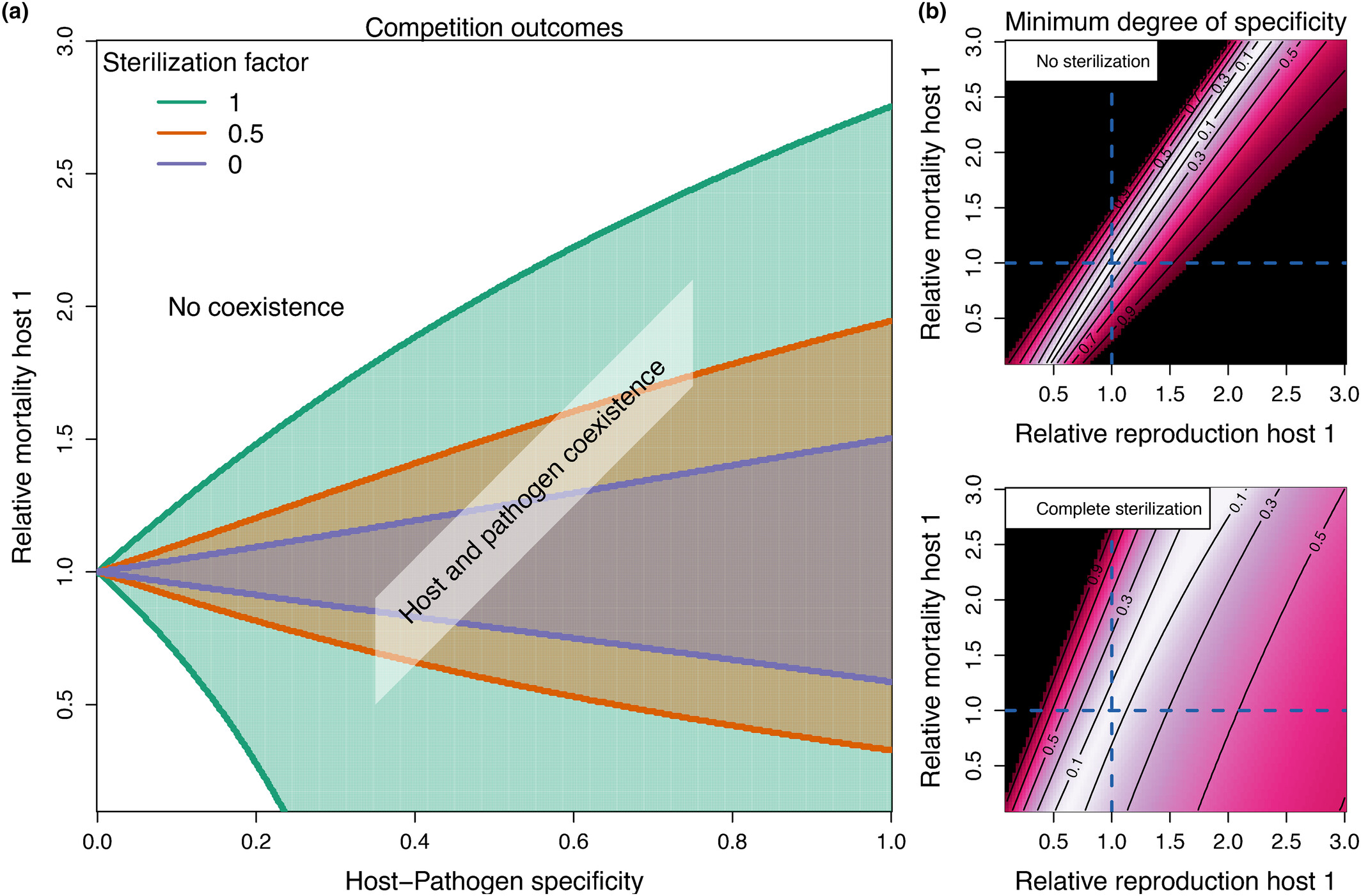
Host coexistence facilitated by host–pathogen specificity.
Closing the gap in the Janzen–Connell hypothesis: What determines pathogen diversity?
Marjolein Bruijning, C. Jessica E. Metcalf, Marco D. Visser Published: October 2023 🔗 Read the full paper
Does species crowding stabilize tropical more than temperate forests?
Plants often struggle when surrounded by neighbors of the same species—a process known as conspecific negative density dependence (CNDD). A long-standing hypothesis suggests that this effect is stronger in the tropics, helping maintain high biodiversity. Using dynamic mortality data across 23 forest sites worldwide, we found that while CNDD stabilizes communities across latitudes, its role differs between temperate and tropical forests. Rare and intermediate-abundant species in tropical forests experience stronger stabilization than common species, a pattern absent in temperate forests. These findings suggest that CNDD may play a greater role in structuring tropical forests and supporting their high species diversity.
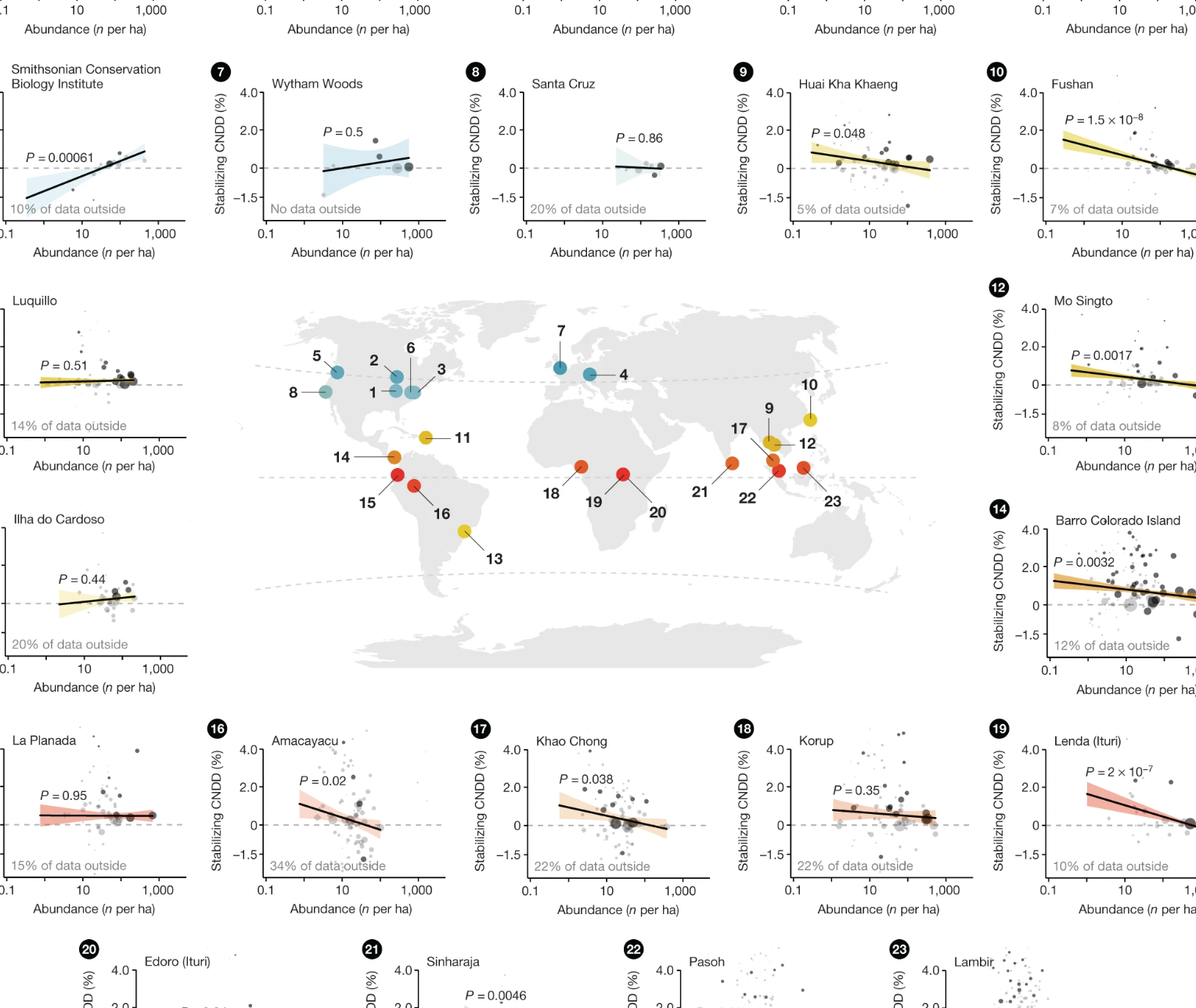
Our global analysis explores how conspecific negative density dependence shapes forests from the tropics to temperate zones.
Latitudinal Patterns in Stabilizing Density Dependence of Forest Communities
Lisa Hülsmann, Ryan A. Chisholm, Liza Comita, Marco D. Visser, Melina de Souza Leite, [...], Florian Hartig
Published: June 2024, Nature, Vol. 627, pp. 564–571
🔗 Read the full paper
What drives tree demography across global forests?
📖 A key chapter in Melina de Souza Leite’s PhD thesis—recognized as an Editor’s Choice !
Understanding tree demography is key to predicting the future of the world’s forests. In this study, we analyzed over 2.9 million trees across 21 forest plots worldwide to uncover the major factors influencing tree growth, mortality, and recruitment. We found that species differences explain much of the variation in tree demographics, but their importance declines in highly diverse forests. Our findings provide a framework for understanding how tree population dynamics are organized, offering new insights for forest modeling and conservation.
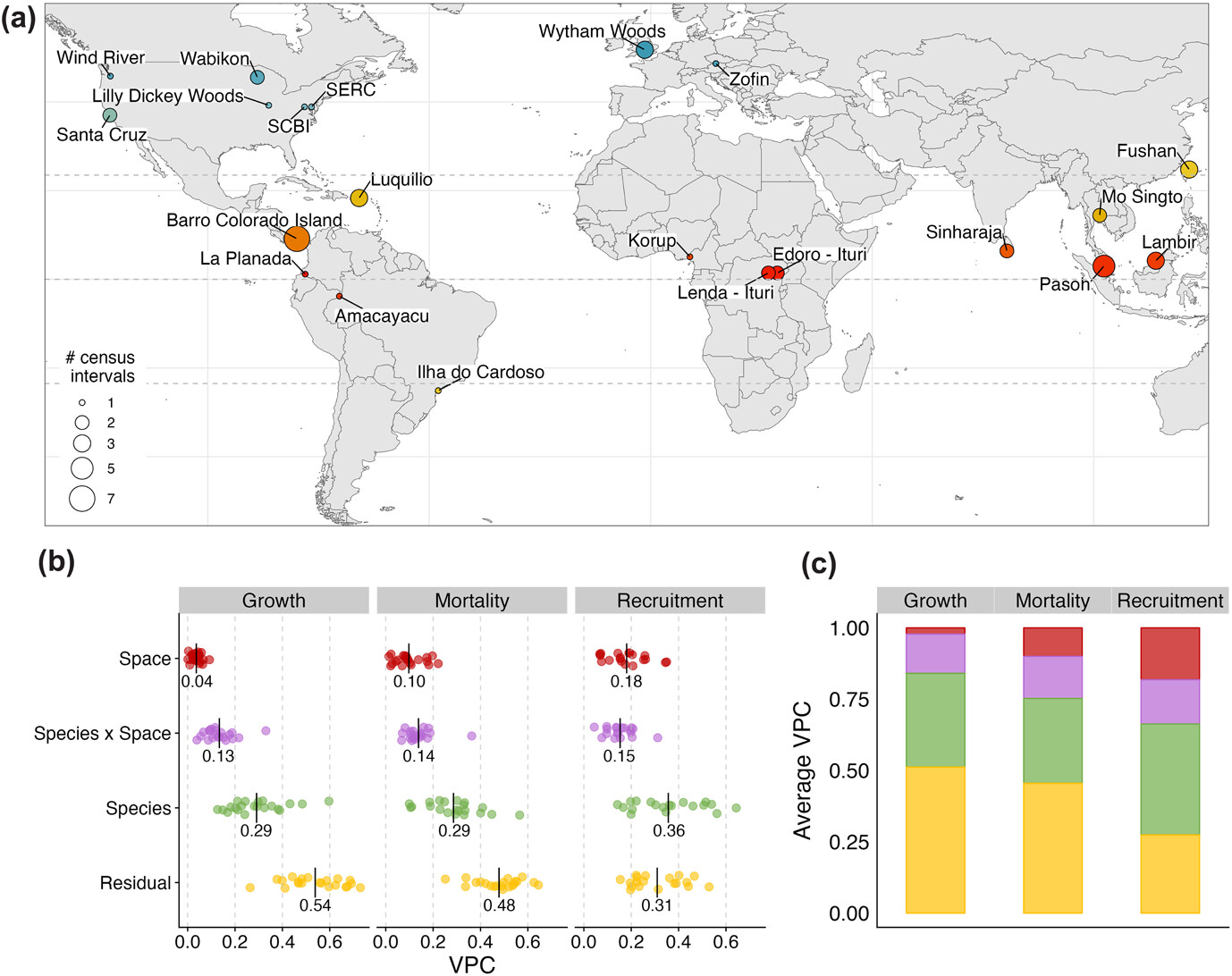
A large-scale study revealing the major axes of variation in tree demography, based on species, space, and time.
Major Axes of Variation in Tree Demography Across Global Forests
Melina de Souza Leite (PhD student, MuSE Lab), Sean M. McMahon, Paulo Inácio Prado, Stuart J. Davies, Alexandre Adalardo de Oliveira, Hannes P. De Deurwaerder, Salomón Aguilar, Marco Visser
Published: May 2024, Ecography
🔗 Read the full paper
How lianas change the energy balance of tropical forest
Lianas don’t just compete with trees for space and resources—they also change how tropical forests interact with sunlight. Using a meta-analysis and mechanistic biophysical models, we found that lianas infested forests reflect more light than liana-free forests, increasing forest albedo by 14% while reducing light availability in the understory by 30%. This leads to cooler soil temperatures (-0.5°C) but also a 19% decline in tree productivity. Meanwhile, lianas thrive, increasing their own productivity by 27%. These findings reveal a new, large-scale mechanism by which lianas alter tropical forest functioning and carbon cycling.
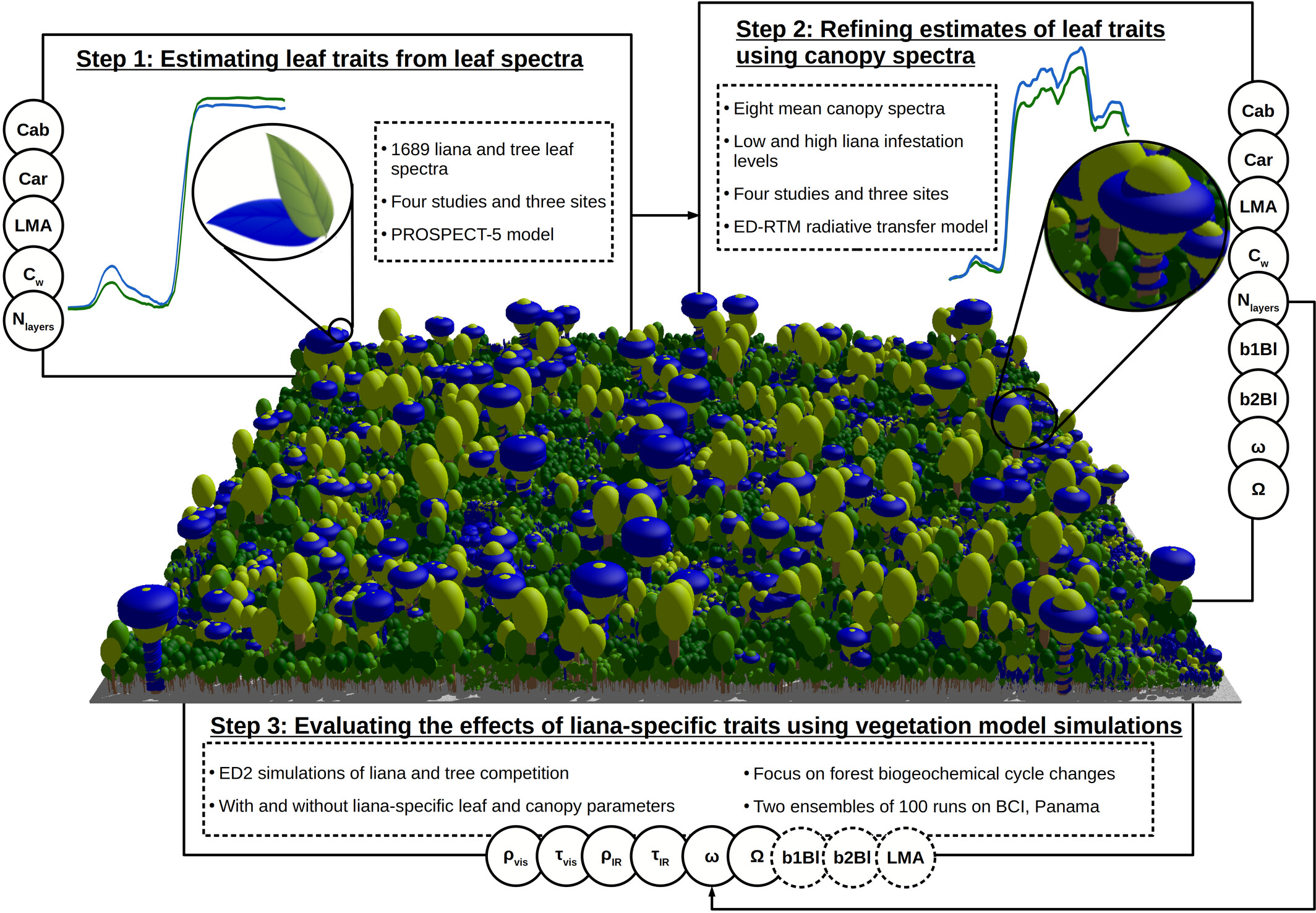
Liana leaf traits alter forest energy balance, impacting ecosystem productivity and climate interactions.
Liana Optical Traits Increase Tropical Forest Albedo and Reduce Ecosystem Productivity
Félicien Meunier, Marco D. Visser, Alexey Shiklomanov, Michael C. Dietze, J. Antonio Guzmán Q., G. Arturo Sanchez-Azofeifa, Hannes P. T. De Deurwaerder
Published: October 2021, Global Change Biology
🔗 Read the full paper
Canopy disturbance fuels liana expansion in tropical forests
Lianas are rapidly increasing in tropical forests, but why? Using a 10-year study of 117,100 lianas in an old-growth Panamanian forest, we found that local canopy disturbances drive liana proliferation. Liana density increased by 29.2%, and their basal area grew by 12.5%, largely due to clonal stem expansion in canopy gaps. These findings suggest that lianas may be actively shaping their own environment, preventing tree regeneration and maintaining high-light conditions that favor their continued dominance.
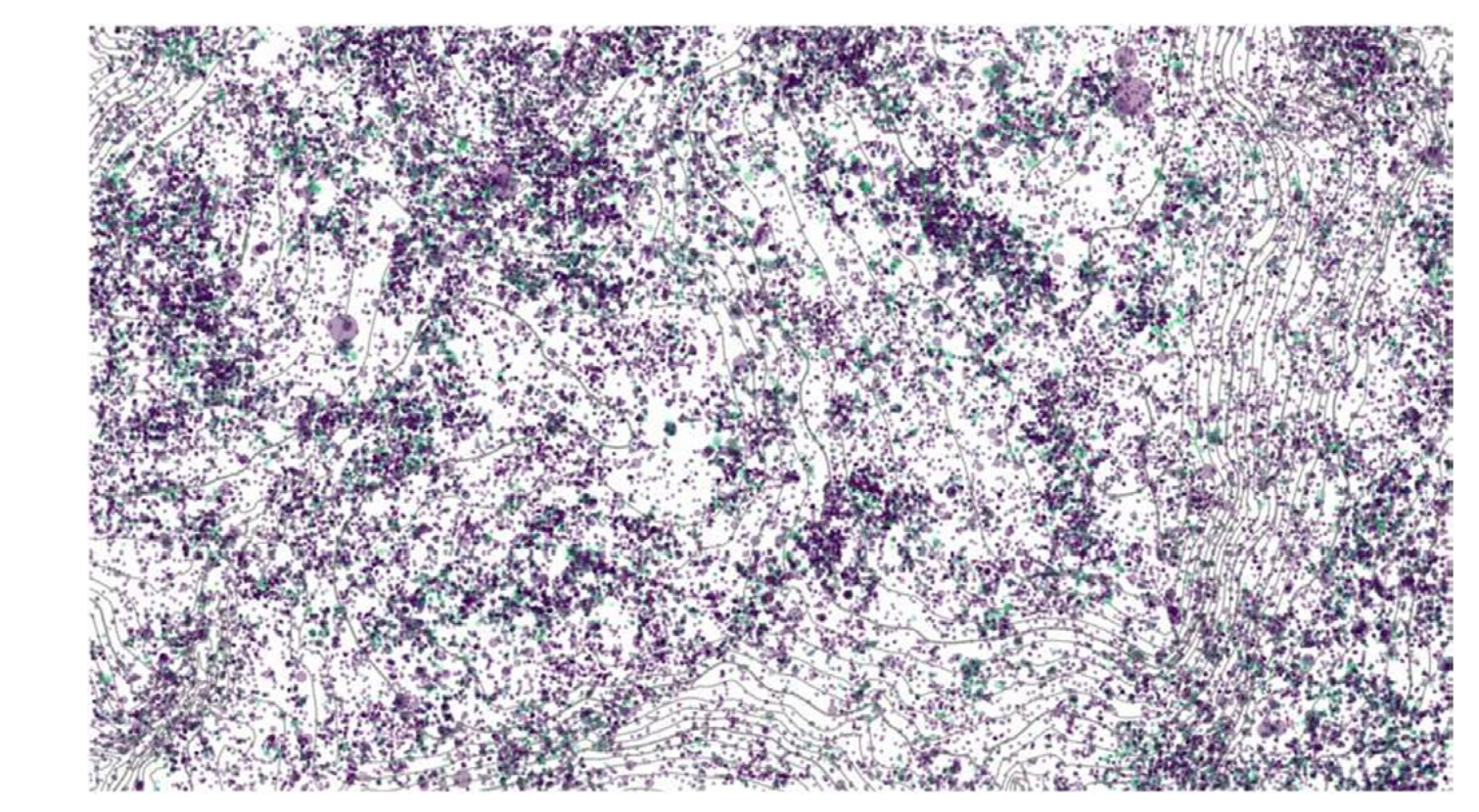
Lianas exploit canopy gaps, increasing their density and altering tropical forest regeneration.
Local Canopy Disturbance as an Explanation for Long-Term Increases in Liana Abundance
Stefan A. Schnitzer, David M. DeFilippis, Marco Visser, Sergio Estrada-Villegas, Rigoberto Rivera-Camaña, Boris Bernal, Salomé Peréz, Abelino Valdéz
Published: September 2021, Ecology Letters
🔗 Read the full paper